laser
Latest

World's quickest laser pulse can track electrons in slow motion
The race to produce ever-faster laser pulses has set a new record, and it could lead to breakthroughs in our understanding of atom-level physics. A team at ETH Zurich has shortened an X-ray pulse to just 43 attoseconds (10-18 seconds), which is quick enough that you can observe electrons moving in slow motion. That, in turn, makes it realistic to study extremely fast processes, such as the formation of chemical bonds or the creation of electricity in solar cells.
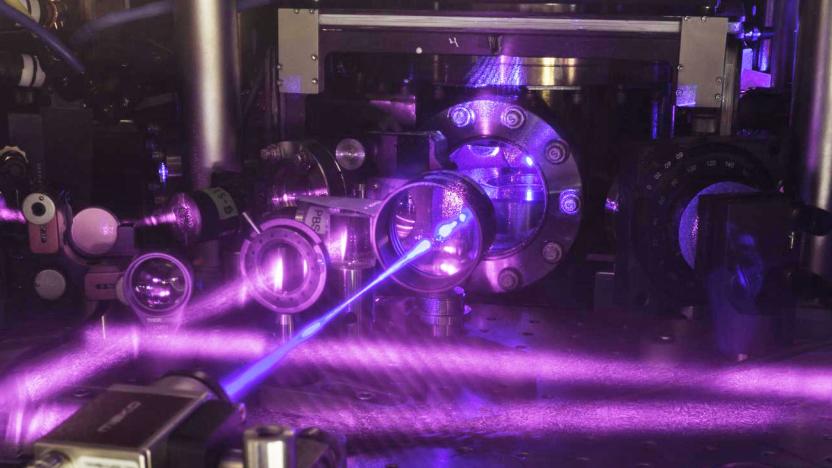
Researchers have increased atomic clock precision yet again
Researchers have pushed the precision and stability of atomic clocks to increasingly greater levels over the last few years. A big advancement was the introduction of optical lattices, lasers which essentially quarantine individual atoms and boost accuracy by keeping them from moving around and interacting with each other. Scientists at the National Institute of Standards and Technology (NIST) have used this method to develop clocks so stable, they can keep extremely precise time for thousands and even billions of years. The team's most precise clock was created in 2015, but research published this week in Science describes a new version that just took that top spot.

Scientists recreate Neptune's diamond rain using powerful lasers
While we've yet to fully explore Neptune and its fellow gas giants, scientists have a lot of theories about them based on the info we know. For instance, they believe that it rains diamonds on those planets -- diamonds that sink into their interior and form a sparkly crust around their solid cores. Since it might take a long time before we can study our gas giants more closely, a team of researchers have decided to take matters into their own hands. They recreated Neptune's conditions at Stanford's SLAC Laboratory and successfully observed the formation of diamond rain, thanks to the help of some very powerful lasers.

Optical laser uses shockwaves to peer inside distant planets
Scientists at SLAC's National Accelerator Laboratory are able to peer even further into space thanks to an improved optical laser. The laser uses shockwaves to create high pressure conditions in materials, and the material's response is then captured by an ultra-bright X-ray laser, revealing what's going on inside planets and meteors. Upgrades to the optical laser means it's now three times more powerful, with the equivalent power of 17 Teslas discharging their 100 kilowatt-hour batteries in a single second.
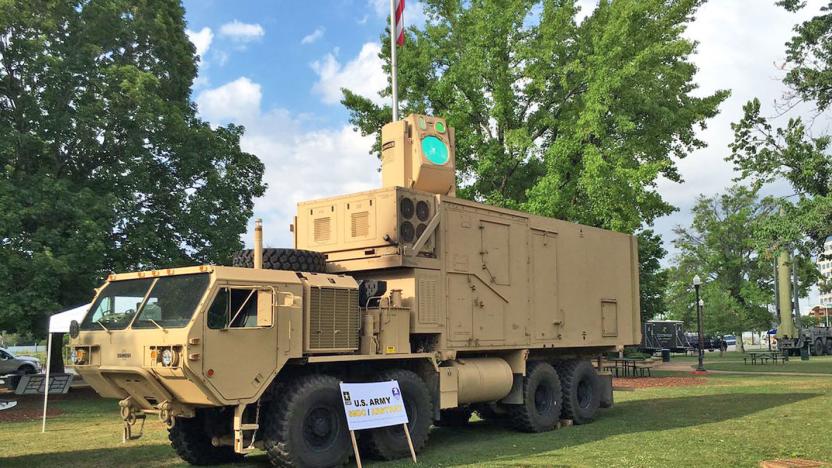
US Army expects to take down planes with anti-air lasers
Forget shooting down drones with vehicle-mounted lasers -- the US Army is ready to take on the bigger machines. Space and Missile Defense Command chief Lt. Gen James Dickenson has revealed that the Army is preparing lasers that are ten times more powerful than the ones in testing now, at between 50kW to 100kW. That kind of wattage is strong enough to take down aircraft, and might even throw missiles off their targets by confusing their sensors. They won't necessarily require gigantic trucks like they do today, either.
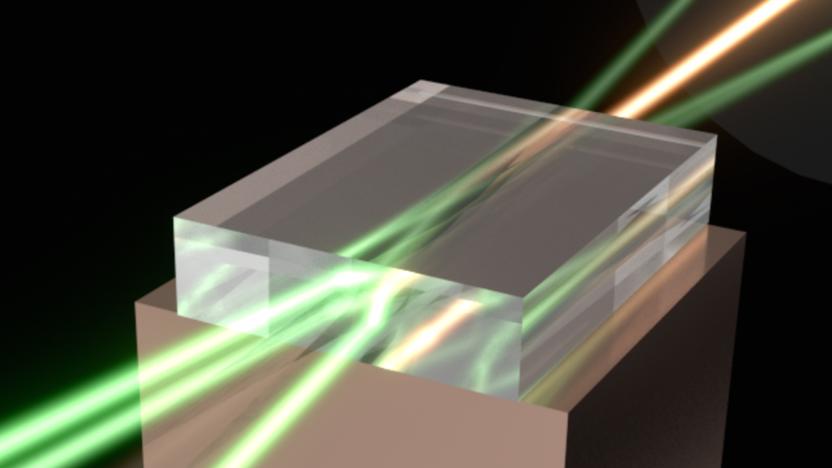
Death Star-like lasers become a practical reality
Like many elements of sci-fi, the superweapon in Star Wars' Death Star seems implausible: can you really combine multiple laser beams into one fearsome blast? Apparently, you can... if not quite as dramatically as you see in the movies. Scientists have developed a technique that uses diamond to merge multiple laser beams into more powerful ones. The key was to put an exceptionally pure diamond at the point where the beams converge, taking advantage of the crystal's inherent tendency to send the light's power in a specific direction. The material is good at shedding excess heat, too, which is rather important when you're funneling a lot of laser power into a small space.

Laser pulse study could lead to ultrafast computers
Computers that run 100,000 times faster than current ones can change life as we know it. They could help discover distant planets more quickly or diagnose illnesses much, much earlier than usual, among other things. A team of researchers, including engineers from the University of Michigan, believe they've found a way to achieve that goal using extremely short laser pulses. The researchers have demoed a method to control "femtosecond" (one quadrillionth of a second) pulses of light that can move electrons quickly and efficiently. U of Michigan says it's a step toward "lightwave electronics," and eventually, quantum computing.
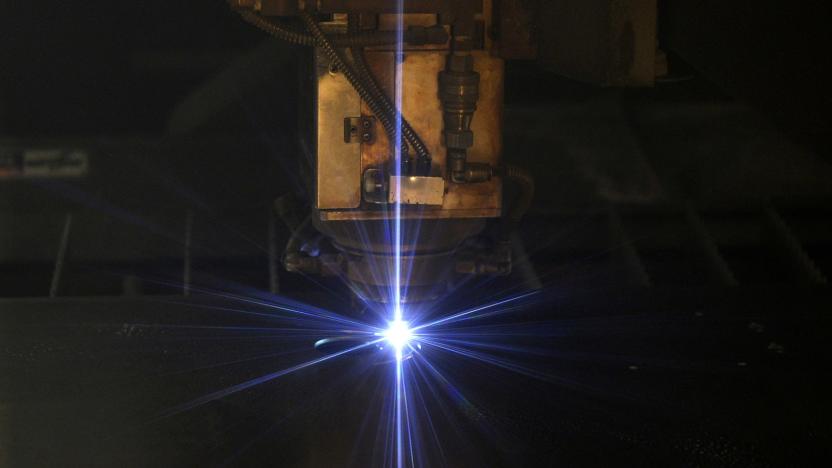
Researchers have built a 1,000-watt 'super laser'
A team of British and Czech researchers have announced that they've constructed and fired a 1000-watt "high peak power laser". It's dubbed the "Bivoj", after a Herculean-like Czech mythical hero. This laser is reportedly ten times more powerful as any other of its kind and should qualify as a new world record holder, according to Martin Divoky a physicist working at HiLASE, the Czech state-owned research facility where the laser was developed. Britain's Central Laser Facility also contributed to the research.

ICYMI: Lasers of the future will create an atmospheric lens
try{document.getElementById("aol-cms-player-1").style.display="none";}catch(e){}Today on In Case You Missed It: A new company called BAE Systems is touting its Laser Developed Atmospheric Lens tech, which aims to use particles in the atmosphere to make a big magnifying glass. They admit we are many years from actual application of the idea, but that doesn't make the video any less cool. Meanwhile NASA is booking rides on Russia's space transport vehicle, the Soyuz, through 2019, since SpaceX and Boeing are both behind on their plans for a vehicle to get American astronauts to the International Space Agency. The America's Funniest Home Videos compilation is here. As always, please share any interesting tech or science videos you find by using the #ICYMI hashtag on Twitter for @mskerryd.
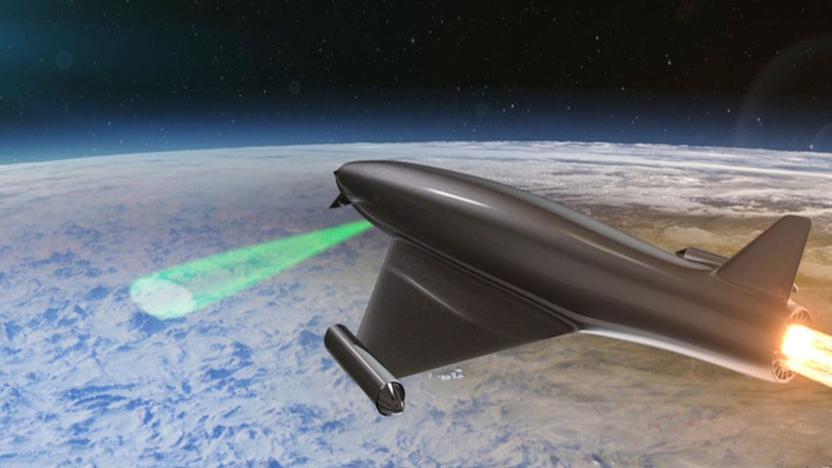
Atmospheric 'lens' could shield troops from laser weapons
How do you defend yourself against laser weapons when they fire at the speed of light? BAE Systems has an idea. It's developing Laser Developed Atmospheric Lens technology that, as the name suggests, uses lasers to temporarily ionize the atmosphere to create lens-like structures. If you're facing a laser attack, you just have to form a lens to serve as a refractive shield. The technology could protect both aircraft and land-based forces from deadly blasts, and it could fill other roles as well.

New York's Citi Bikes are getting laser safety lights
Cyclists have to be wary of everything in big cities, even robotic cars. To help its sharing-service users, Citi Bike in New York is outfitting 250 bicycles with "Laserlight" safety lights from UK company Blaze. They project a bright green bicycle outline 20 feet ahead, effectively giving you a personal bike lane symbol. That helps alert motorists, pedestrians and other cyclists of your presence 30 percent more often than without them, Blaze says.

UK Ministry of Defence is now investing in laser weapons too
If the advent of virtual reality wasn't enough to convince you that we're living the future, the UK military has now invested in laser weaponry. Shelling out £30 million for the project, the UK Ministry of Defence (MOD) has commissioned the appropriately named Dragonfire defense consortium to create a prototype laser weapon that may one day be used to destroy drones, missiles, roadside bombs and other potential threats.

Hisense's laser projector promises a 100-inch 4K screen for $13K
After a few years of absence, laser projectors are back: First LG announced one, and now Hisense has, too. Unlike LG's 1080p beamer, however, this short-throw projector can display a 100-inch 4K image from just a few inches away, and 2,700 lumens that will make it usable in the daytime. Dubbed 4K Laser Cast TV, the package is HDR-compatible and will include a 5.1 audio system when it goes on sale this summer.

X-ray laser spots photosynthesis in real-life conditions
Humanity has known about the life-giving photosynthesis process for a long time, but studying it in real-world conditions has often been impractical. You've typically had to freeze samples to get a good look, which isn't exactly natural. However, the SLAC National Accelerator Laboratory just managed a breakthrough: it used its x-ray laser to capture detailed snapshots of photosynthesis at room temperature. The trick was to place protein complex samples in a solution, put that on a conveyor belt, light it up with a green laser (to start the water-splitting reaction) and capture images using x-ray pulses. As those pulses are extremely fast -- just 40 femtoseconds long -- you can collect crystallization and spectroscopy data before the sample meets its untimely end.

The army may have laser-equipped vehicles by 2017
The army, in partnership with General Dynamics, is developing a short-range laser weapon designed to protect soldiers against mortars, missiles and drones. The news was broken by Scout Warrior, which reports that the weapon could be implemented in as little as a year. The idea is that the technology would be installed on the roof of an armored personnel vehicle -- specifically a General Dynamics Stryker (pictured). Once operational, the technology will scan the immediate area and destroy anything suspicious that approaches by air.

Auto supplier wants to make LiDAR cheaper for automakers
Infineon announced on Monday that it is buying Innoluce BV, a Dutch company that manufactures teensy LiDAR modules, in hopes of using the technology to bring self-driving car technology into the mainstream. "We intend to make lidar an affordable feature for every new-built car worldwide," Peter Schiefer, the head of Infineon's automotive division, said in a statement.

Drones can defend themselves with an anti-laser jammer
There are plenty of efforts to make drone-destroying lasers. But what about protecting those drones? Adsys Controls thinks it can help. It's making Helios, a passive jammer that confuses laser weapons. If it detects an incoming laser beam, it detects the traits of that beam (such as its pulse and wavelength) and interferes with them to prevent the laser from locking on and toasting the drone. The company won't say exactly how this interference works, although it may be a counter laser. The one certainty is that it's reliable -- this is "permanent protection" against subsequent lock-on attempts, not just a momentary break.
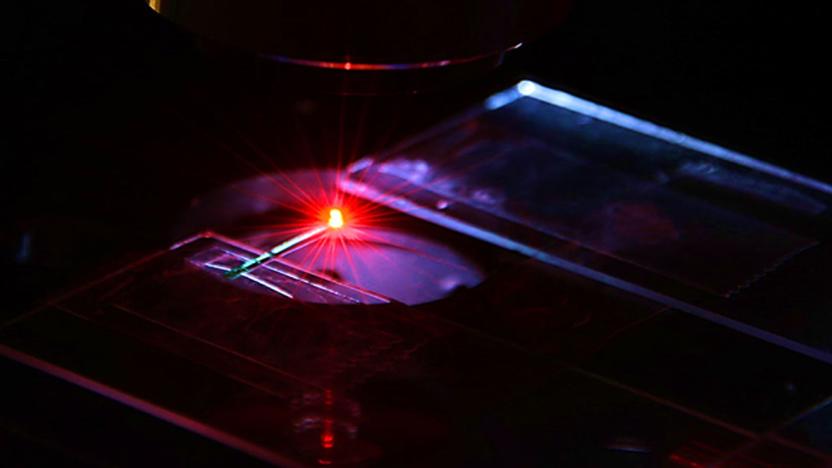
Scientists build a laser using human blood
No, this isn't one of your childhood sci-fi dreams brought to life -- it's real. University of Michigan researchers have developed a medical observation laser where human blood is a key ingredient. When the team shined a laser into a small cavity full of dye-infused blood, they discovered that they could process the laser's light according to their needs. They could amplify the light to exaggerate small changes in cell activity, or filter it to reduce background noise. Existing techniques combine dyes with infrared or visible light in a way that makes it difficult to spot tiny differences.
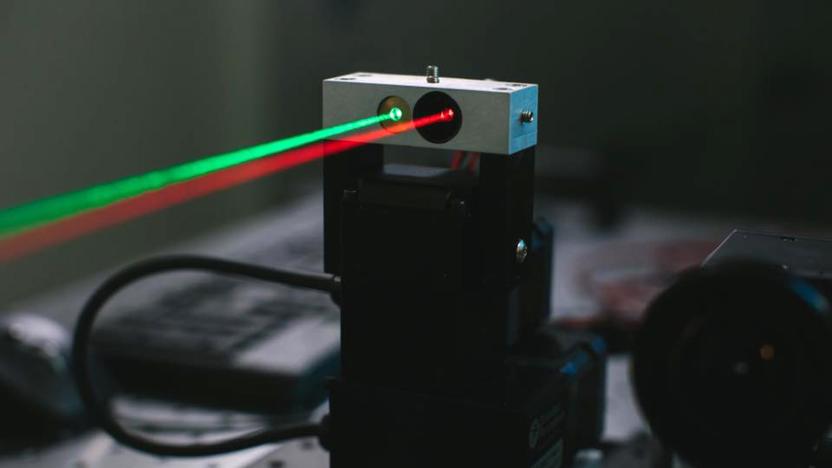
Facebook details a way to offer laser-based internet access
Have you wondered how Facebook might offer high-speed internet access using lasers? The company's Connectivity Lab is happy to show you. It just published a research paper explaining laser beam technology can deliver up to 2Gbps to remote places. The trick, it says, is to use fluorescent optical fibers to collect the light instead of relying on traditional optics. Since the fibers don't emit the same color that they're absorbing, you can shine a brighter light at them (similar to a solar concentrator) and manage an extremely quick turnaround time of under 2 nanoseconds. Combine that with multi-stream data encoding and you get the ample bandwidth that's normally reserved for WiFi and wired networks.
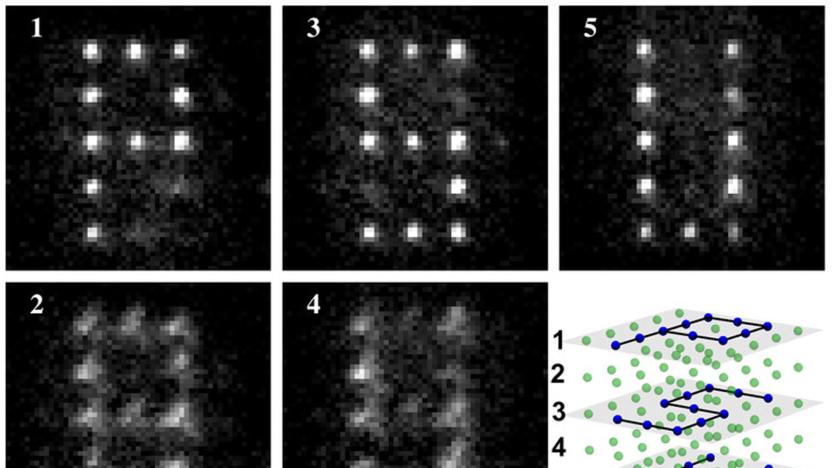
Lasers and microwaves lead to better quantum computing circuits
If you're going to craft a quantum computer, you need to corral lots of quantum bits (qubits) to perform calculations... and Penn State researchers have found a way to make that happen. They've developed a technique that relies on lasers and microwaves to steer a tightly packed, 3D grid of atoms that serve as qubits. When you want to change the state of these atoms, you hit them with crossed laser beams and then bathe them in uniform microwaves. In a test, scientists had enough control to spell out "PSU" across a three-layer array of 125 atoms.









